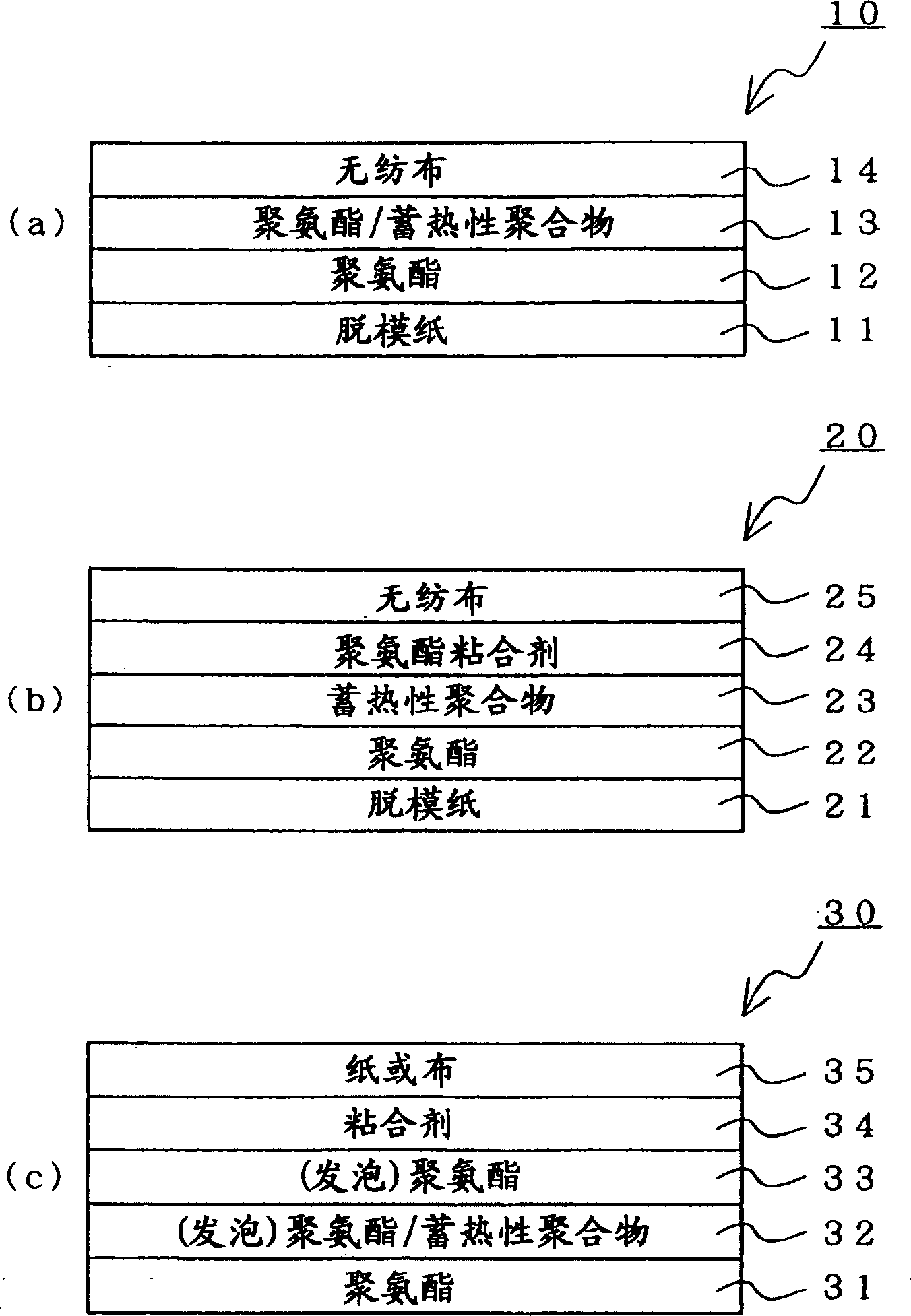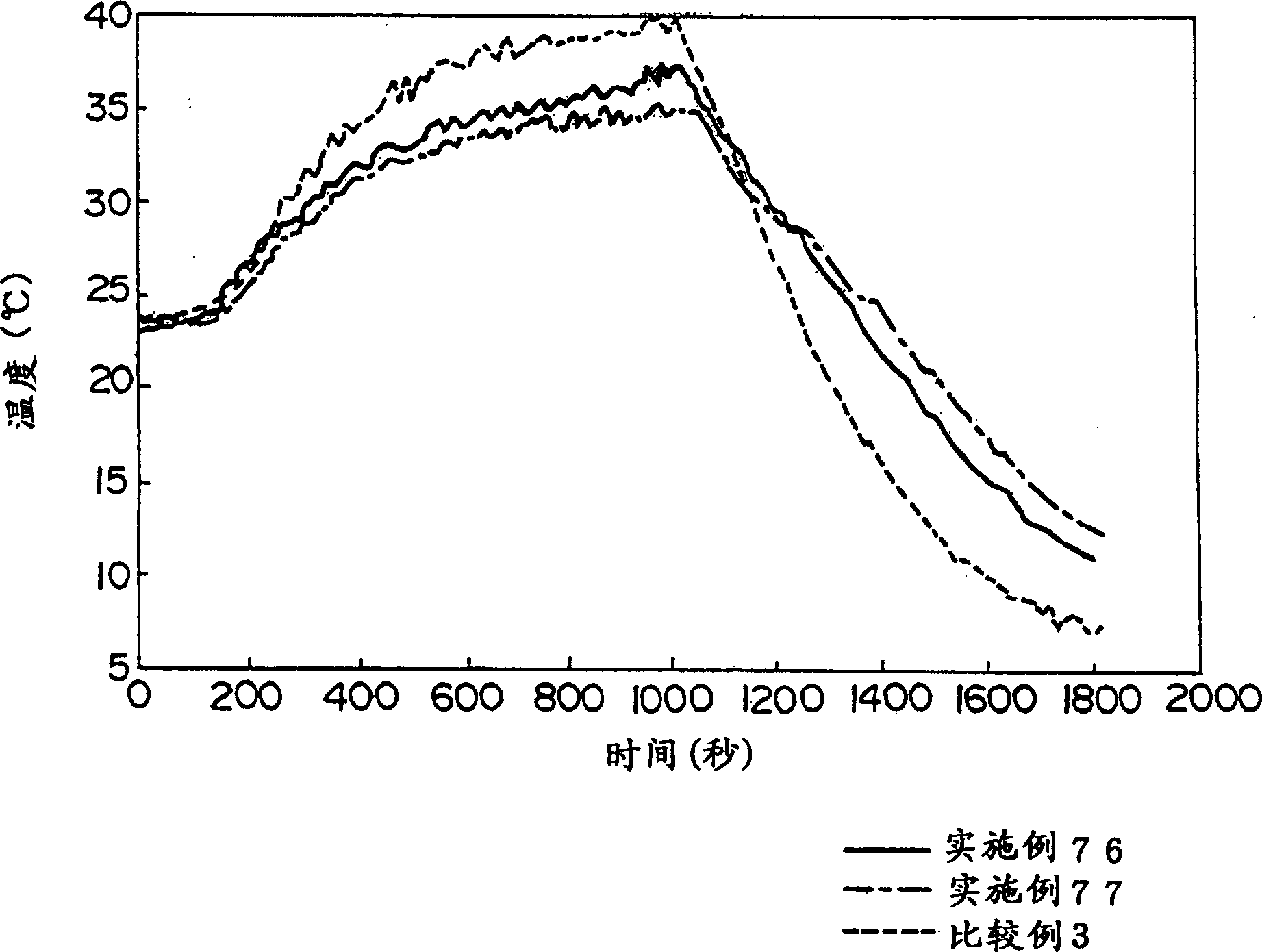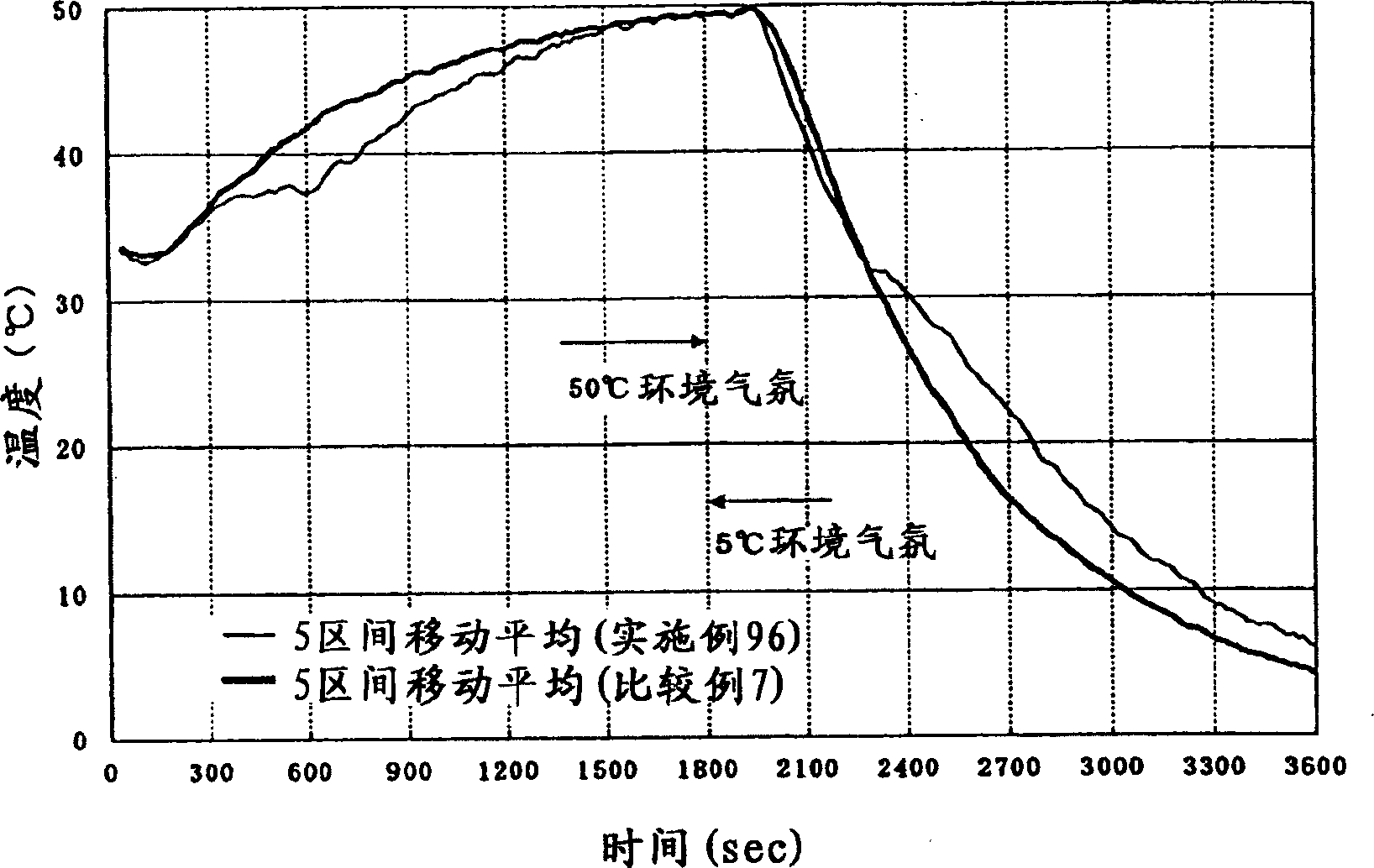Heat storing material, composition thereof and their use
A heat storage material and composition technology, applied in the direction of heat exchange materials, applications, thin material processing, etc., can solve the problems of destroying the comfort of clothes, failure to form, and difficulty in uniform microcapsules, etc.
- Summary
- Abstract
- Description
- Claims
- Application Information
AI Technical Summary
Problems solved by technology
Method used
Image
Examples
Embodiment 1
[0199] Polystearyl methacrylate was synthesized by the following method.
[0200] ① Into a collapsible beaker (4 mouths) with a volume of 2 L equipped with a nitrogen gas inlet tube, a stirring device, and a reflux device, 400 g of stearyl methacrylate (monomer) and 700 ml of THF as a solvent were charged.
[0201] ②While supplying nitrogen gas into the flask, heat the flask to 70°C with a set water bath, and slowly stir to dissolve the monomer.
[0202] ③ After the monomer is dissolved, add 0.1 g of azobisisobutyronitrile (hereinafter referred to as AIBN) as a polymerization initiator and continue stirring. At this time, the supply amount of nitrogen gas was within the range in which THF could be refluxed.
[0203] ④After 1 hour, adjust the temperature of the water bath so that the temperature in the flask is 70-75°C, and react in this state for 7-9 hours to prepare a reaction solution.
[0204] ⑤ Continuously pour the reaction solution into 4L of methanol in small amounts ...
Embodiment 2
[0212] Except that the solvent is toluene, other synthesis is carried out by the same method as in Example 1 to prepare polystearyl methacrylate.
[0213] The weight average molecular weight was 610,000.
[0214] Various characteristics were measured, and the measurement results are shown in Table 2.
Embodiment 3
[0216] Except that the amount of AIBN was changed to 0.2 g, other methods were synthesized in the same manner as in Example 2 to obtain polystearyl toluacrylate.
[0217] The weight average molecular weight was 330,000.
[0218] Various characteristics were measured, and the measurement results are shown in Table 2.
PUM
| Property | Measurement | Unit |
|---|---|---|
| melting point | aaaaa | aaaaa |
| latent heat | aaaaa | aaaaa |
| melting point | aaaaa | aaaaa |
Abstract
Description
Claims
Application Information
 Login to View More
Login to View More - R&D
- Intellectual Property
- Life Sciences
- Materials
- Tech Scout
- Unparalleled Data Quality
- Higher Quality Content
- 60% Fewer Hallucinations
Browse by: Latest US Patents, China's latest patents, Technical Efficacy Thesaurus, Application Domain, Technology Topic, Popular Technical Reports.
© 2025 PatSnap. All rights reserved.Legal|Privacy policy|Modern Slavery Act Transparency Statement|Sitemap|About US| Contact US: help@patsnap.com



